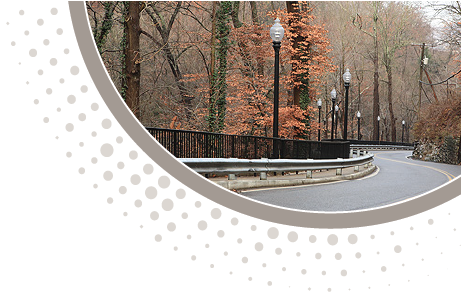Triad Engineering, Inc. (Triad) provided surveying and geotechnical investigation services for green infrastructure practices to be installed in the South Raleigh Street watershed in the City of Martinsburg, WV. Triad was tasked with locating various boundaries, utilities, etc. and conducting a detailed Karst Investigation and geotechnical exploration. This project was related to the “ReGrowing Green” Grant funded by a 2019 Chesapeake Bay Trust Green Streets, Green Towns, Green Jobs Program.
The targeted project outcomes were to reduce stormwater runoff and flash flooding risks occurring along the 600 block of South Raleigh Street with the installation of Green Infrastructure including pervious pavement, bio-retention and tree boxes. Triad’s survey services included topographic and planimetric surveys showing boundary lines, adjacent property information, aboveground infrastructure including impervious surfaces, curb and gutter locations, street signs, utility poles, trees, etc. Location, size and inverts of stormwater and sanitary sewers were also included and the deliverable was provided in CAD and .pdf formats.
Triad’s geotechnical exploration included the development of a detailed karst plan identifying the presences of karst features such as subsurface voids, cavities, fractures, and discontinuities, with may preclude the use of distributed infiltrating stormwater management facilities. Triad utilized 2-Dimensional Electrical Resistivity Imaging (ERI), a geophysical technique utilized to measure the in-situ resistivity of the earth materials, in other words, how difficult it is to pass an induced electrical current through the subsurface. Resistivity is nothing more than the inverse of conductivity. Therefore, resistivity imaging is a measurement of the conductivity of the subsurface materials at a site. Generally, soils are more conductive than competent bedrock and can be imaged with this technique. Karst terrain soils associated with sinkholes, voids, solutioning channels and incipient sinkholes are typically cohesive and very moist. Therefore, they are more conductive than the surrounding bedrock or other soils. In addition, anomalous voids and caves can possibly be imaged provided a contrasting resistivity gradient exists between the anomaly and the surrounding earth materials. Additional soil testing and infiltration testing was also included.


